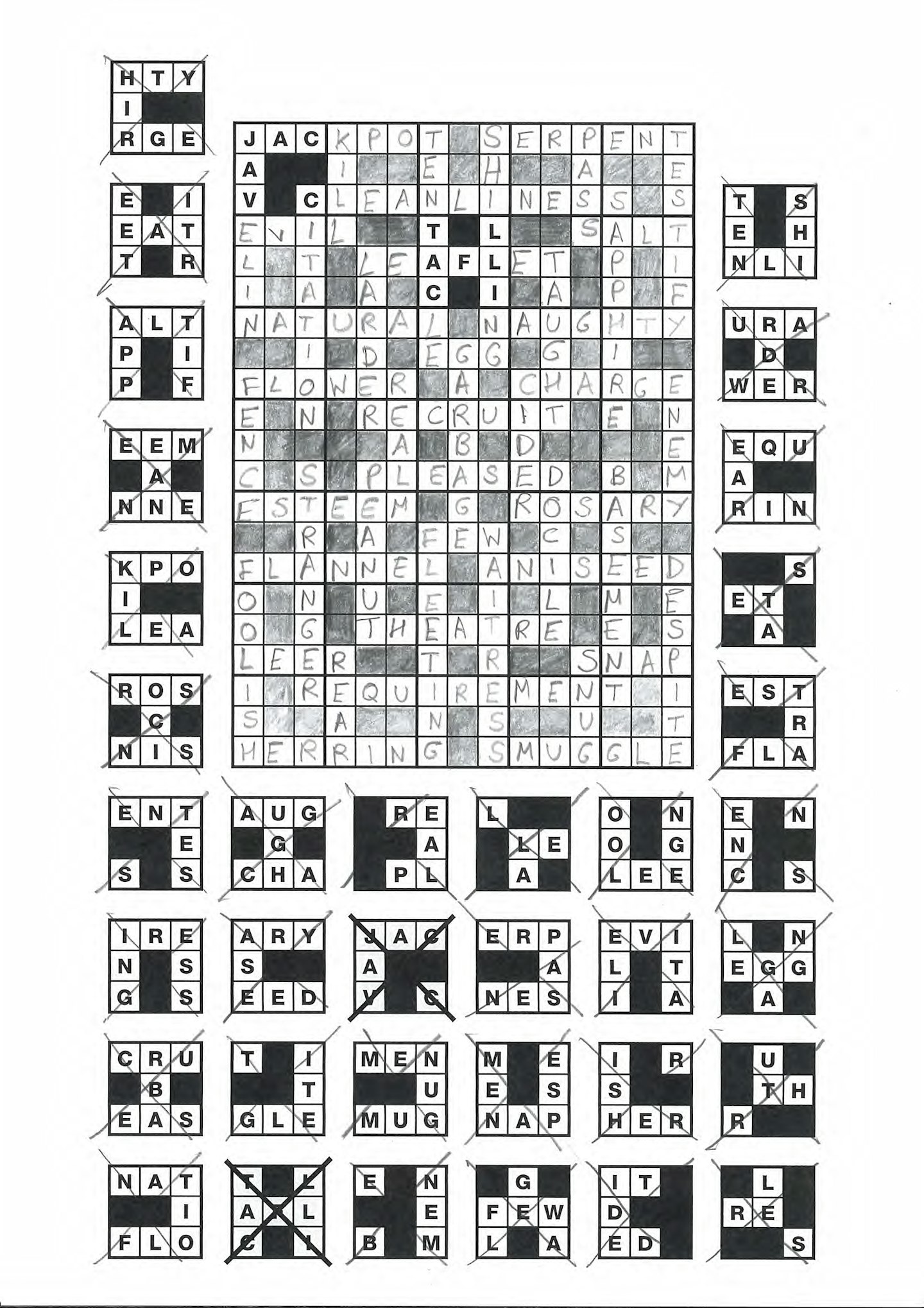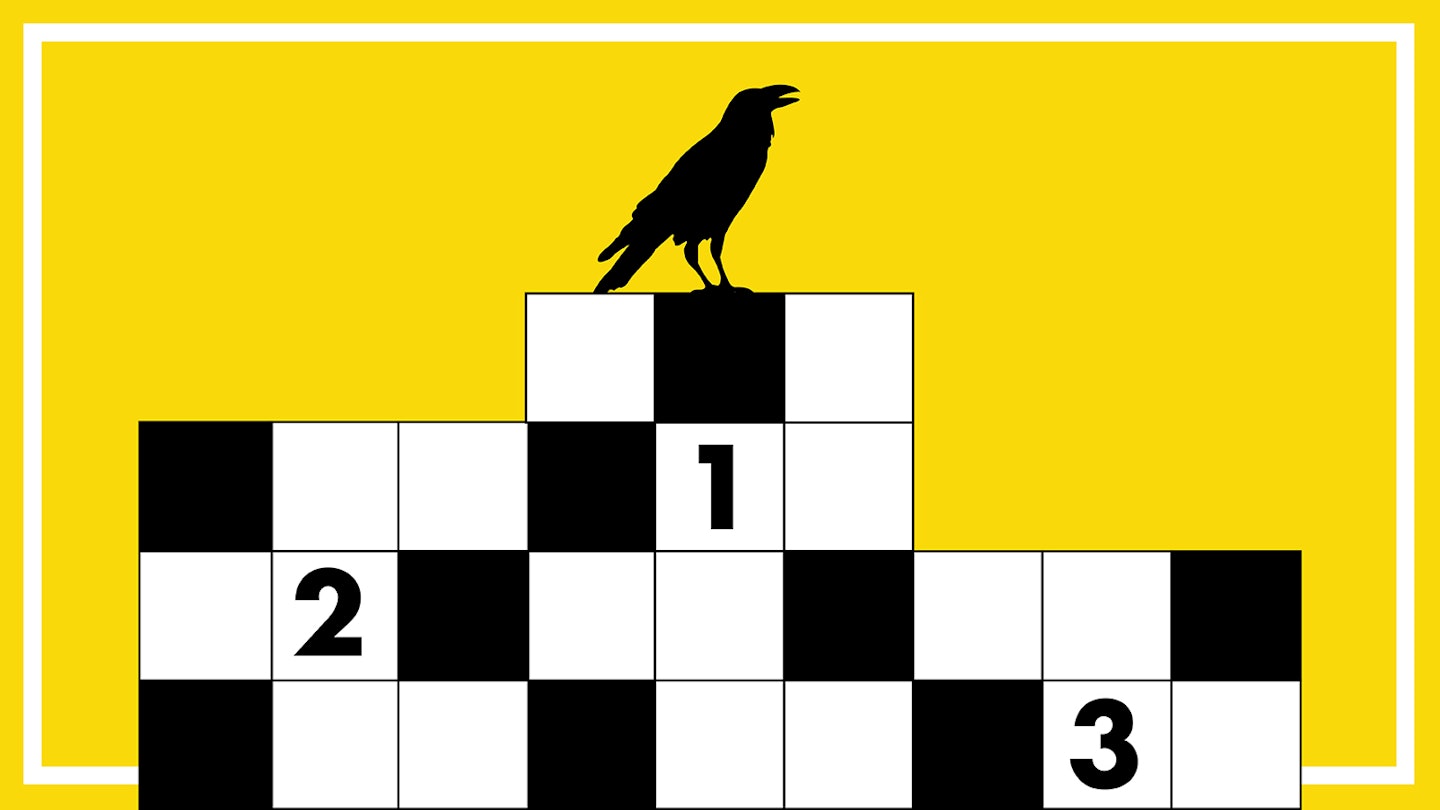In a Bits and Pieces puzzle the aim is to reconstruct a symmetrical crossword that has been cut into pieces. The size of the puzzle and the number of pieces can vary, but the example here is a 15x21 grid, broken up into 35 pieces. Two of these have already been correctly placed to start you off.

Getting started
What makes a Bits and Pieces puzzle so engaging is that it combines pattern recognition with knowledge of the English language. This gives you two different techniques to use when solving the puzzle.
The easiest way to begin is to consider the pattern suggested by the squares that have already been placed. Knowing that the puzzle is symmetrical allows you to find the remaining three corners by looking for pieces that reflect the angle bracket pattern that appears in the top left square.
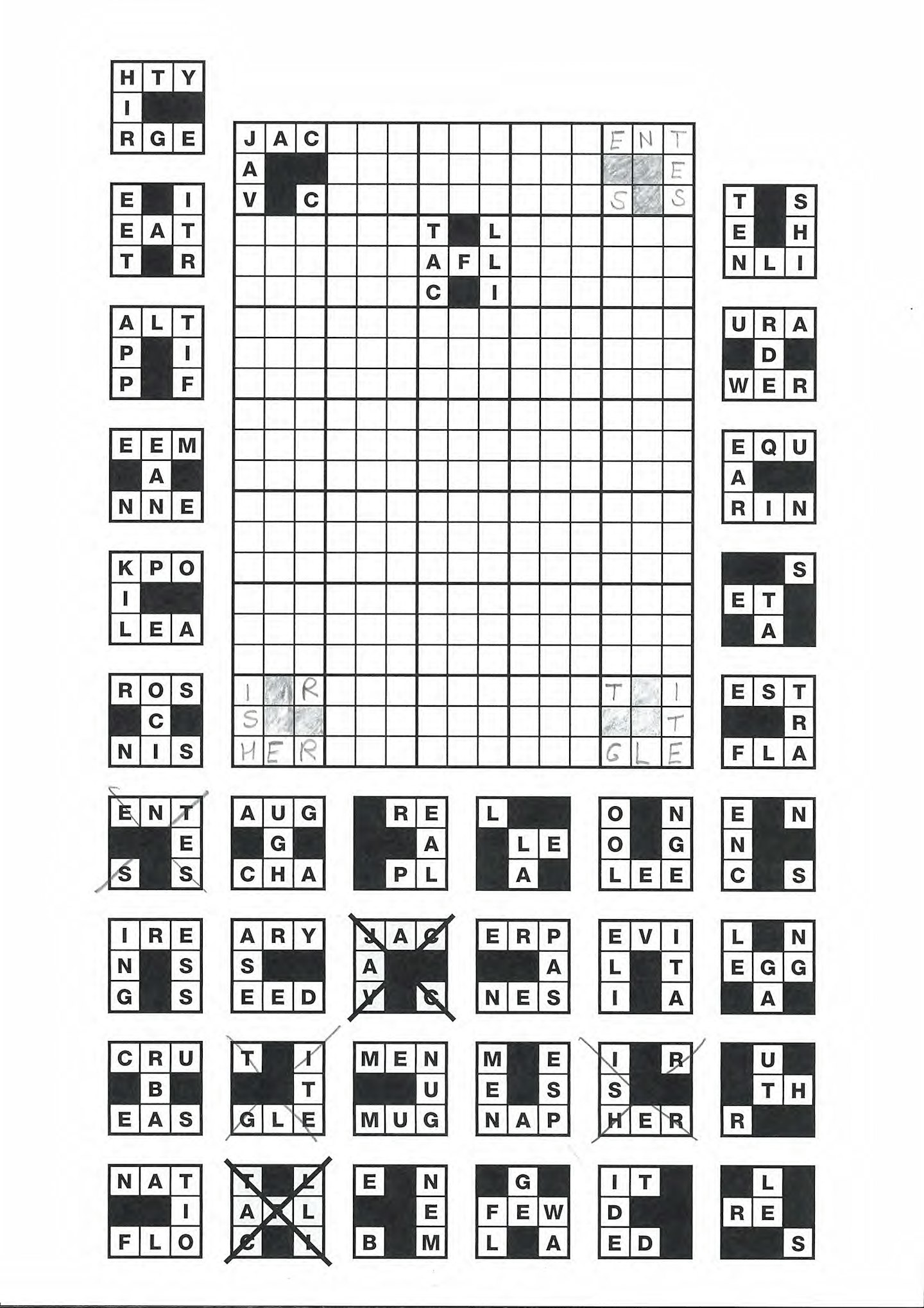
The fact that you’ve been given a corner piece to start you off gives you an advantage, as there is no ambiguity about which piece can fit where. In a more difficult puzzle, however, there might be more possibilities. If you have the choice between two pieces with identical patterns, consider tendencies in the English language to see which is more likely to fit into the space. For example, many more English words begin with ‘GRE’ than end this way, so a piece with this on it is unlikely to fit into a position where it will be ending a word.
Making progress
Now that you’ve filled in the corners, it’s time to start completing rows or columns. To do this, you need to think about the rules of the English language and look through the unplaced pieces to see which ones can be added to the grid.
Again, the top left square is a good place to start, as the letter combinations ‘JAC’ and ‘JAV’ are only rarely found at the start of English words, allowing you to quickly narrow down your options. Look through the pieces and see if any of them contain letter combinations that could plausibly follow either ‘JAC’ or ‘JAV’. Although none of the pieces can follow ‘JAC’ to make a complete word, the one with ‘KPO’ running along the top is a promising possibility, as it begins the word JACKPOT. Another look at the pieces confirms that a ‘T’ can indeed be added, allowing you to fill in the top left part of the puzzle.
This leaves you with ‘S_ _ _ ENT’ in the top right corner. While there are a number of letter combinations that could theoretically fit in this gap – ‘EGM’ to make SEGMENT, for example, or ‘TUD’ to make STUDENT – only one of them appears in a piece. Placing this in the space gives the word SERPENT running along the top. It also completes the longer word CLEANLINESS, which runs along the bottom of the row.
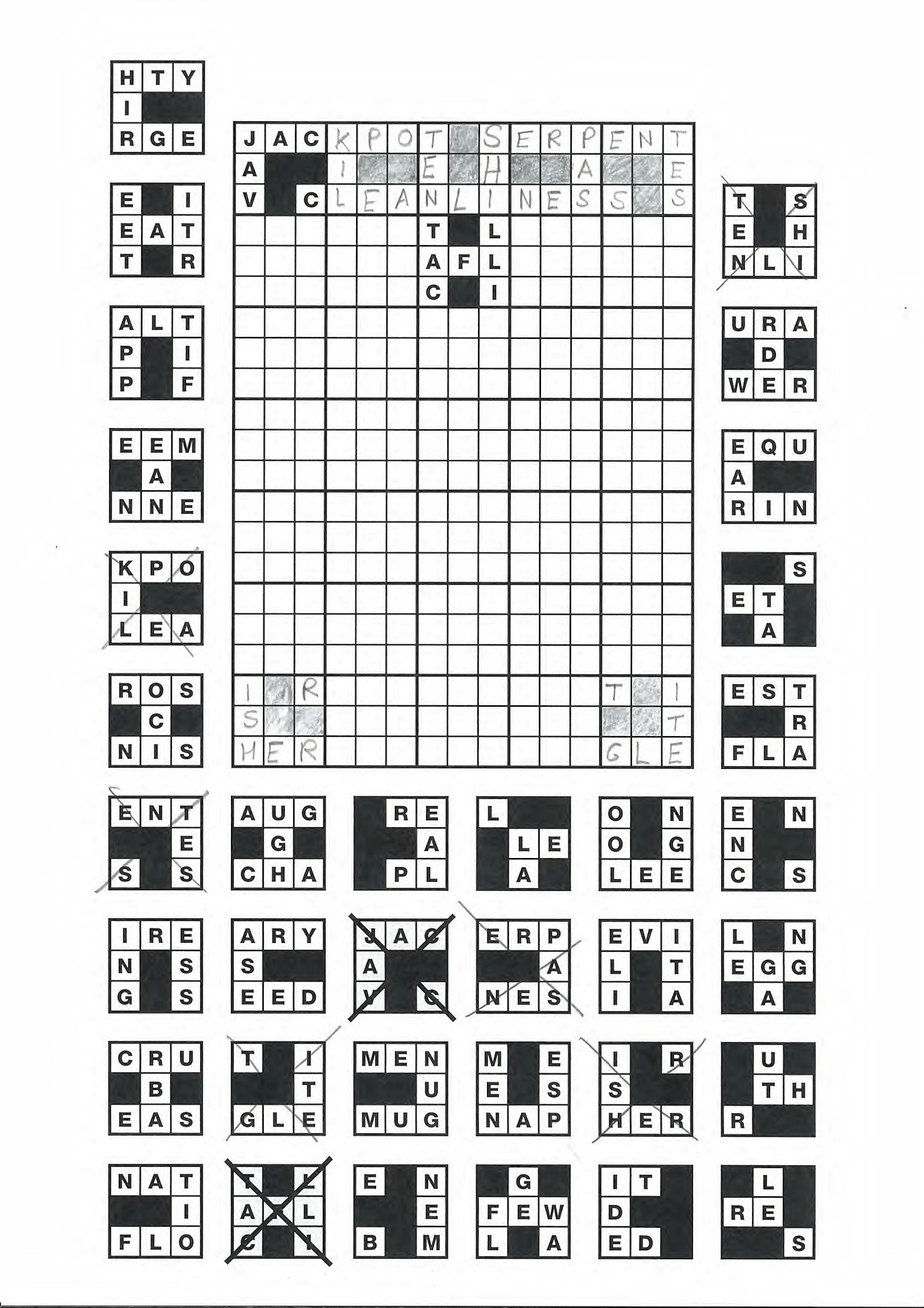
Once you’ve filled in one row, the puzzle’s symmetry allows you to fill in the row opposite and the columns perpendicular. You can also turn your attention to the filled square in the second row, logically deducing that the letter combinations ‘TENTAC’ and ‘SHILLI’ are likely to be followed by ‘LE’ and ‘NG’ to make the words TENTACLE and SHILLING. As these letter combinations do indeed appear in a piece, you can add them to the grid. The puzzle’s symmetry then allows you to fill in the squares opposite.
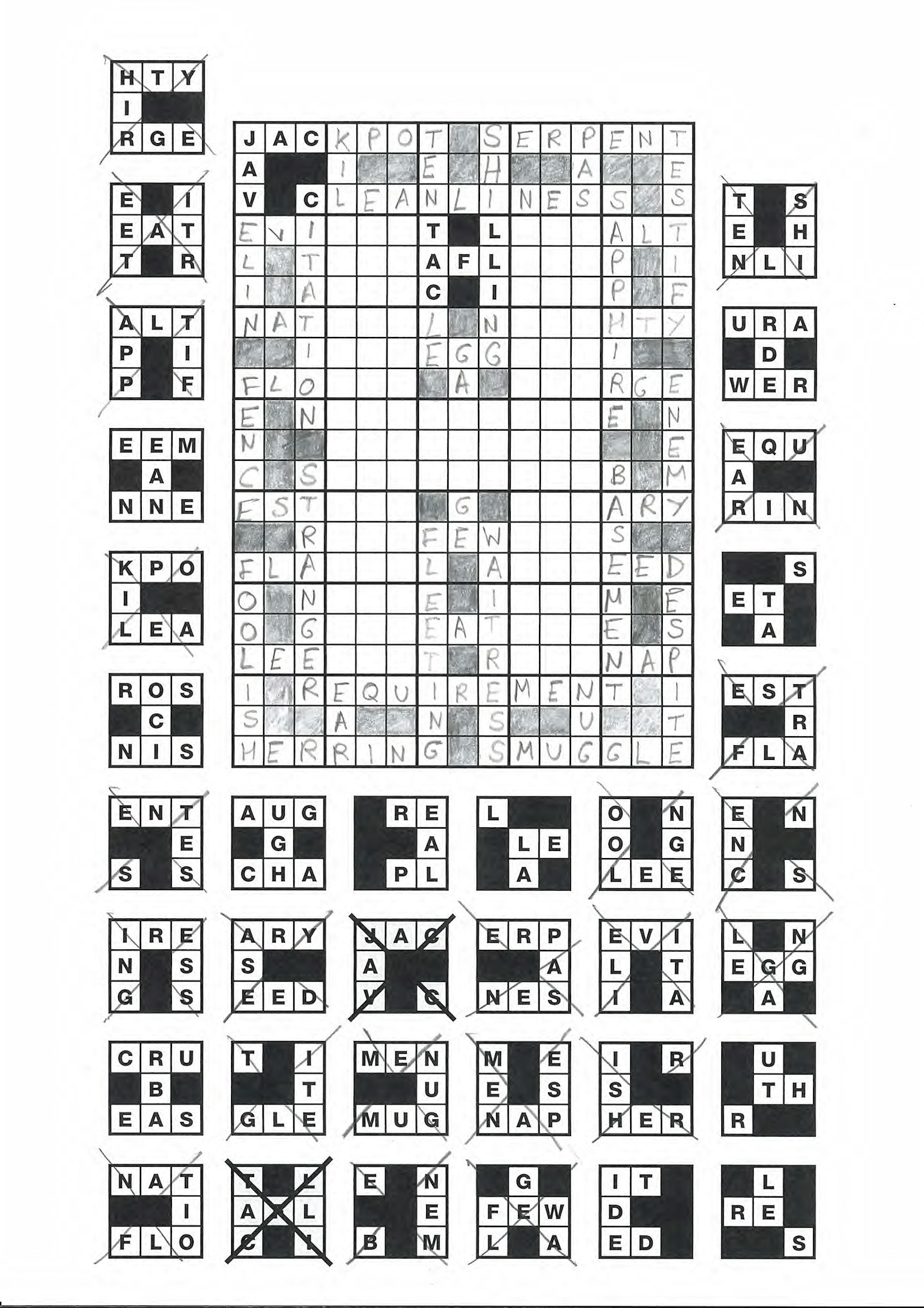
Final pieces
Now that you’ve added most of the pieces, simply repeat this process, looking for letter combinations in the remaining pieces that complete words, and exploit the puzzle’s symmetry to fill in the side opposite.
